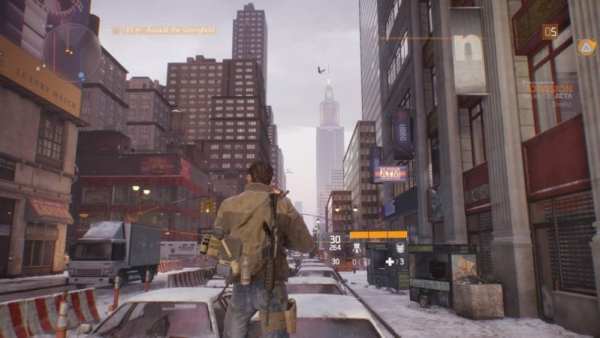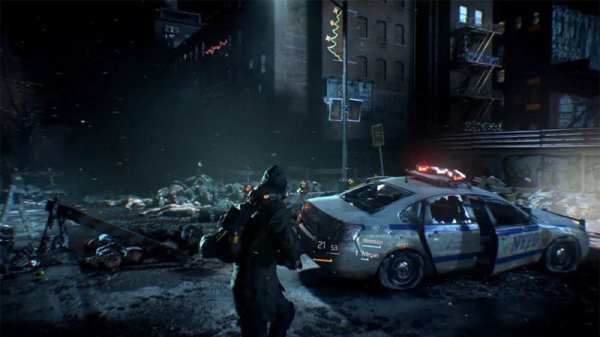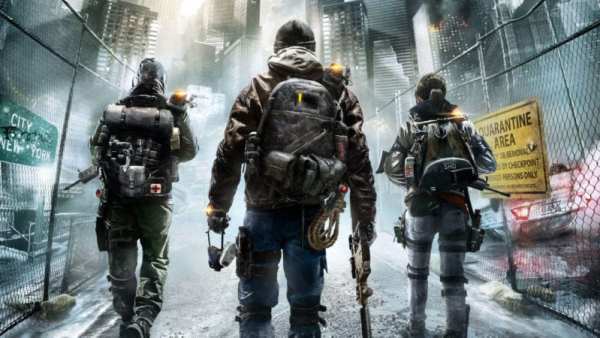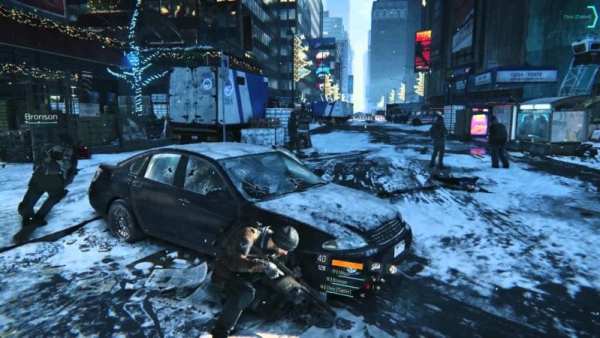Narrative
Although it takes place in the “real world,” it’s very easy to draw similarities between The Division and 2014 hit Destiny. Both are shooters that take place in a shared world, with focuses on team dynamic and end-game content.
With the similarities in tow, it’s not too out of this world to wonder if The Division can match up to Destiny and succeed in the shared-world shooter space. This is especially true when you look at all of the things The Division is getting right.
One of the major issues players had with Destiny when it first released was its story or, better yet, lack thereof. Players were promised a space opera to rival that of Star Wars, but were instead treated to a secret narrative you had to uncover and then use your phone or computer to read. It wasn’t what players expected.
The Division is also bringing random story bits for you to discover through Echos and files, but there is also a very clear narrative being painted for you as you walk through its dying NYC. A virus spread during Black Friday has put the city in shambles. People are scared, others are spiraling into insanity and homicide, and it’s up to you to stop it.
NPCs are out in the world with you, missions are given by people you meet and over radio, and the world is constantly providing you with more story. The Division definitely has the leg up here, even after The Taken King’s revamping of Destiny. Moreso, this narrative strength carries over into the game’s world.
The World of The Division
Making an open world for multiple players that also feels alive is no small feat. Destiny tried to provide this livelihood through random activities, but outside of these mini-missions, the world was mainly a constant cycle of enemy group respawns. It covered the basics, but it made each of the planets come across as a bit formulaic. By placing its focus entirely onto the city of New York, The Division was able to put all of its eggs into one basket and keep things active with more success.
As you stroll through the streets, you’ll come across other survivors and agents that you can assist. Enemies are camped out and up to no good. Dynamic events unfold as you work your way through missions. The NPCs, the people you rely on for missions and other things, feel like they’re an organic part of The Division’s New York.
Scavenging for food and resources, helping those in need, killing enemies – all of it just feels right in this world.
Loot
Loot in The Division works like your typical action RPG, similarly to how it worked in Destiny. There are several levels of of weapons and armor denoted by colors, with White being the most common and Yellow being the super rare, highly coveted lot. What sets The Division apart is that there are no specific weapon-type slots with the exception of your unlimited sidearm.
There are many types of guns: machine pistols, machine guns, assault rifles, sniper rifles, shotguns, you name it and you’ll probably find it. You can equip them as you please, each type requiring it’s own ammo. If you want, you can have two different assault rifles at once with different setups. Perhaps you keep one equipped for long range and one designed for blind firing in dicey situations. The rate of drops (during the beta at least) were frequent enough to where collecting these arms didn’t feel like a grind.
The same could be said about the armor, of which there are several slots to switch between and many unique looks. Each piece carries its standard armor count as well as stats that can alter your life, damage output, and recharge time for abilities.
Rarer gear (Blue and higher) even has perks that you can unlock by completing a task, usually getting kills with the weapon. Overall, there’s a nice balance and a steady flow with zero cryptarchs involved. You play the game, you get the rewards.
Customization
One area where Destiny sorely lacked was in customization. There were lots of armors and weapons, but not many were in demand. When it came down to it, most players (especially higher leveled ones) equipped the same thing, only in a different color. The game’s loot system didn’t really allow for anything else.
Customization may not be a big deal for everyone, but it’s certainly something that helps to add to the fun of any RPG. You’d be hard pressed to find a game that doesn’t boast it as one of its features, and The Division is no different.
What makes customization so special in The Division is that it visibly shows. Customize a gun, and every single attachment can be seen hanging on your back or from your holster.
If you feel the need to change your clothes, go right ahead and take back the city in the finest winter chic. Clothing itself contribute to your carry capacity and is completely separate from your armor (which also shows over and under your clothing). You can really deck out your Agent to be unique both in weaponry and wear.
It’s a nice touch to the open world and it allows you to make your mark, even if it’s just to have someone pass by with even nicer clothes.
Multiplayer
For The Division’s story, side quests, and random encounters, you’ll be able to play alone or with up to three other Agents. You’ll roam the streets together, coordinate attacks, flank enemies, hold the line as a distraction, and much more. Multiplayer is done very well, and has a natural feel that lends itself to the situation.
Taking the time to figure out who’s going to do what and choosing the perfect loadout and skills to get it done is quite engaging. The intelligent AI present in the enemy forces helps compound the feeling, as they’ll do everything in their power to pin you down and take you out.
That freedom in choosing loadouts is where The Division really pulls away from Destiny. Bungie’s game had three classes, each with three subclasses. This provided some wiggle room, yes, but for the most part your method of play was pre-determined by the character you chose to level up. That restriction doesn’t exist in The Division’s multiplayer. You always have the opportunity to learn and adapt, and with no rigid class structure, you can create your perfect agent.
Where the multiplayer truly shines is the Dark Zone. There is no safety from other players in this area; anybody can turn on you at the drop of a dime with no warning. Doing so will put a price on their head for a set period of time, since harming non-aggressive players will mark you as rogue. Once you finally get to proceeding with an extraction, you run the risk of attracting undesireables to your location. This all contributes tension as you move from cover to cover, looting locations and securing your position.
Will The Division Take Over?
The Division manages to get a lot of things right. The look and feel of the action are on point, the world itself feels both dangerous and inviting, and the RPG elements introduced into the third-person shooter are solid. It is definitely a tight online multiplayer shooter.
The Division is taking full advantage and succeeding where Destiny lagged in its initial release. With Destiny no longer focusing on new expansions, The Division offers something new and fresh within the same realm. It has a lot of room to grow but it’s definitely on solid ground.
What do you think about The Division so far? Let us know your thoughts below.
More The Division
- Watch 30 Minutes of The Division Beta Gameplay
- Here’s Why You Went Rogue in The Division’s Dark Zone
- The Division: How to Extract Loot from the Dark Zone
- The Division Is Getting Free Content All Year, Season Pass Unlocks 3 Expansions






